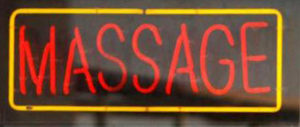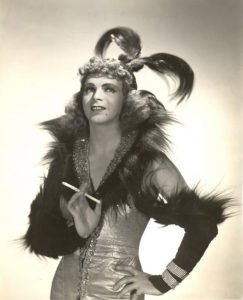An unusual feature of the building is the ring bolts in the floor. Most of the rooms have at least one or two of them, including ours. Made of steel, the rings are about 4 inches in diameter and ½ an inch thick. They are set deeply into the concrete and would take a good deal of jack-hammering to remove. The rings keep the patients from running away. Not all the patients; only some of them…the incarcerated ones. Prisoners are driven across town from the city jail by bus to our hospital. Always in hand-cuffs and sometimes shackled around the waist or ankle when transported, the prisoners are brought for whatever medical attention they need. While in the hospital the prisoners are escorted by one or more Sheriff’s deputies. Transferred to our care the patient is changed out of his prison garb and prepared for the medical encounter. In the case of our department, they are moved from a hospital gurney to the procedure table wearing nothing but a hospital gown. Once on the table, they are covered in sheets, like any other patient that comes to us. But unlike other patients and to ensure an escape-free medical encounter, the deputy chains the prisoner to the ring bolt in the floor. Secured from any attempts at escape, we can begin our work which sometimes lasts several hours. Usually, and at several points, the table has to be moved along with the prisoner on top. Shackled at the ankle or wrist and with chains running to the ring bolt, movement of the table with the prisoner-patient on top causes the chains to rattle. It is not a sound usually associated with the medical setting and can be attention-getting when first heard.
Because our procedures are invasive, pain control and sedation are required, induced by liberal doses of powerful narcotics delivered through an intravenous line in the patient’s arm. The drugs are really quite potent; some being 10x more powerful than heroin. To exaggerate only slightly, the nurses can inject drugs of sufficient quality and quantity to subdue an angry rhino, let alone a human being with thoughts of escape on his mind. Given the medication, the prisoners are only too happy staying put. In fact, they are not going anywhere and the chains seem unnecessary. Indeed, our pharmacologic restraint works better than any physical restraint ever could. Nobody bothers to struggle or even thinks to struggle. But the deputies insist on the extra precaution of using the ring bolt anyway. Unless the prisoner is firmly attached to an immovable object, the deputies are just not happy. They have their methods and we have ours.
The medical staff isn’t supposed to ask the deputies what the prisoner has done to earn his time in jail. It’s none of our business really. Nevertheless, some of the deputies like to chat-it-up and let slip a detail or two about their charges. A rapist here. A murderer there. But mostly the prisoners are short timers doing a stint for purse snatching, auto theft or some other non-violent offense. Very occasionally, we get prisoners from the state or federal prisons. Except when in our direct care, prisoners are dressed in bright orange jump-suits with a big “City Jail” or “DOC” – as in Department of Corrections – emblazoned across the back. It makes them easy to spot at a distance just in case somebody has to chase them down the hall during an escape attempt. To be sure, the incarcerated are amongst us. Part of the ambiance of the place entails the possibility of hours of detailed, pain-staking work going down the tubes in the event a prisoner makes a break for it and isn’t seen again or is shot dead.
 Amongst both the incarcerated and un-incarcerated patients are street prostitutes. Not the well-manicured ladies-of-the-evening of imaginative fiction, but working girls applying themselves in the backseats of cars parked in a downtown parking lot. As their sort of work is illegal in this town, they move between being jailed and not being jailed. Because they frequently have medical problems related to their line of work, they become our “regulars”, as they themselves would describe it. Rene was one of our most frequent regulars. He would get arrested, be in jail for a time and need medical attention for his chronically failed kidneys. Or, if Rene was out of jail and working the streets, he would come to us like any other patient, through the out-patient clinics. As the techs and the nurses got to know Rene, a usual greeting developed. When he walked in the room, the staff would call out in unison “Hey Rene . . . are you in or are you out?” The in or out referred to whether he was in jail or not. It was obvious whether Rene was in or out by the route he came to us, the presence or absence of the deputy, use of the ring bolt, etc. The greeting came about as a friendly salutation in recognition of Rene’s frequent encounters with the law. He took it in the good humor in which it was intended.
Amongst both the incarcerated and un-incarcerated patients are street prostitutes. Not the well-manicured ladies-of-the-evening of imaginative fiction, but working girls applying themselves in the backseats of cars parked in a downtown parking lot. As their sort of work is illegal in this town, they move between being jailed and not being jailed. Because they frequently have medical problems related to their line of work, they become our “regulars”, as they themselves would describe it. Rene was one of our most frequent regulars. He would get arrested, be in jail for a time and need medical attention for his chronically failed kidneys. Or, if Rene was out of jail and working the streets, he would come to us like any other patient, through the out-patient clinics. As the techs and the nurses got to know Rene, a usual greeting developed. When he walked in the room, the staff would call out in unison “Hey Rene . . . are you in or are you out?” The in or out referred to whether he was in jail or not. It was obvious whether Rene was in or out by the route he came to us, the presence or absence of the deputy, use of the ring bolt, etc. The greeting came about as a friendly salutation in recognition of Rene’s frequent encounters with the law. He took it in the good humor in which it was intended.
Rene was unusual for a prostitute. He was skilled in the ways of what is by and large a woman’s trade catering to men. Artifice and concealment were part of Rene’s stock-in-trade. Usually in flamboyant female dress and heavily made-up, his craft consisted of discerning quickly and accurately another person’s leanings. He could be seductive and aggressive in quick succession, going back and forth between the two in an effort to elicit an emotional response he could play on. This was part of his line of work. He had to make quick decisions to adapt his mannerisms and patter; all to engage potential clients. On the street he had to appeal to everyone that came along. His livelihood depended on it. Once hooked – and they’re called hookers for good reason – Rene could be anything the customer wanted. If the customer wanted a heterosexual entente, Rene tilted towards the female. If the customer was looking for a same sex encounter, Rene could do that too. Rene’s oeuvre revolved around not having to turn anyone away. With us, he made no attempt to alter his mannerisms to accommodate the medical setting. Rene was angling all of the time; probably because it was the only way he knew how to act. I imagine he did this in jail too where alliances between prisoners were a matter of survival and sex is used as currency or coercion.
 Most times, the concealment and misdirection were successful enough that Rene’s satisfied customers had no idea they had just been had by a man. In fact, it was a point of pride for him. Apart from encounters with the law, however, the times Rene got into serious trouble were in putative “heterosexual” encounters, when the John would discover Rene was not anatomically female. In the midst of passion – or as much passion that can develop in a dark, trash filled alley – Rene’s male parts would be uncovered, literally and figuratively. Shock and rage resulted. Violence would ensue and Rene would get the shit kicked out of him. Needless to say, payment for services rendered was not forthcoming.
Most times, the concealment and misdirection were successful enough that Rene’s satisfied customers had no idea they had just been had by a man. In fact, it was a point of pride for him. Apart from encounters with the law, however, the times Rene got into serious trouble were in putative “heterosexual” encounters, when the John would discover Rene was not anatomically female. In the midst of passion – or as much passion that can develop in a dark, trash filled alley – Rene’s male parts would be uncovered, literally and figuratively. Shock and rage resulted. Violence would ensue and Rene would get the shit kicked out of him. Needless to say, payment for services rendered was not forthcoming.
One day, it occurred to us we hadn’t seen Rene in a while. It had been a few months and we began to wonder about him. There is no easy way to track someone like that as they live under inconstant circumstances. When the Sherriff’s deputies came through with other prisoners, we asked if they knew of his whereabouts. None did. We never did find out what happened to him. My guess is that Rene died, either murdered while working the streets or from his kidney failure. It’s the way things are for many patients at an indigent care hospital – a tenuous and uncertain existence followed by untimely death.
Of course, another aspect of the hospital’s services to ladies-of-the-evening included the treatment of diseases transmitted through sexual activity. Sexually transmitted infections are considered a matter of community health and resources are allocated from the public purse to combat them. One of those resources is the sexually transmitted disease clinic. It looks like any other clinic, but caters to the population most affected, i.e. people in the sex trade. The street walkers become regulars with the older and smarter ones coming to get tested regularly. It’s the newly recruited girls – the teenagers – that come in emotionally distraught; with the first case of whatever they have. After the fourth or fifth case of some disease or several diseases, a resignation takes hold and becomes just part of their job.
The occasional odd fish comes through the STD clinic now and again. They are the businessman or businesswoman or other professional type that doesn’t want to share their problem with their usual uptown doctor for fear of being stigmatized. They know where they’ve come and risk being seen in the company of hookers for a reason. Or they’re doltish, found the clinic in the Yellow Pages, it seemed like the right place to come, and have no idea who they’re sitting next to in the waiting room. In either case, they have the legitimate fear of having their problem shared with third parties like insurance companies. Then there are the marrieds. They’ve gone outside the relationship they have with their spouse, fear takes hold about being found out and they want some balm to sooth their minds. That is they want something, usually antibiotics, before any possible disease has had time to incubate and produce actual physical symptoms. They are panicked more than anything else. You usually just have to tell them to come back if they develop symptoms and give them a canned spiel about risky sexual behaviors along with a colorful pamphlet to take with them. There really isn’t any medicine to ease a guilty conscious.
 As women continue in this line of work, it becomes difficult to separate out medical problems from their living circumstances. Working on the street, a physically abusive partner, alcohol and drug addiction all take their toll with mental and emotional problems thrown in on top. They all roll into one, exacerbating and feeding off each other. The medical and rehabilitative communities do the best they can to tease each problem out and offer solutions. Sometimes though, and it is difficult to admit this, individuals become hopeless with the medical and psychiatric establishments incapable of offering any substantive remedy. It no longer is – and maybe never was – a medical or rehabilitative problem.
As women continue in this line of work, it becomes difficult to separate out medical problems from their living circumstances. Working on the street, a physically abusive partner, alcohol and drug addiction all take their toll with mental and emotional problems thrown in on top. They all roll into one, exacerbating and feeding off each other. The medical and rehabilitative communities do the best they can to tease each problem out and offer solutions. Sometimes though, and it is difficult to admit this, individuals become hopeless with the medical and psychiatric establishments incapable of offering any substantive remedy. It no longer is – and maybe never was – a medical or rehabilitative problem.
Unfortunately, there is another version of sex-for-sale. This version is seen on TV and in the movies. It is a sanitized and romanticized version; the whore with a golden heart as she is famously depicted. Western intellectuals also like to indulge in this sort of fiction. To form solidarity with some of society’s most forlorn individuals, the intellects like to say they are pro-prostitute or go so far as to say they are pro-prostitution. In exquisitely tortured, high-minded rhetoric they say things to appear tolerant and knowing. They imagine prostitutes to be just like the girl they know next door; all smiles and innocence, biding her time taking money for sex until deciding to go into another line of work. It’s just another way for a woman to use her sexuality, they say; like it’s a choice on life’s menu of endless possibilities. It is a noble but ultimately pointless and misguided sentiment. The subjugation and violence are glossed over and even willfully ignored. And in the case of the young run-away, having to turn to prostitution as a way of escaping a troubled life, emotional and economic restraints keep them in a very real form of human servitude. In the mind of Hollywood and the intellectual, it all becomes an abstraction to be used for dramatic or political purposes. I suggest the abstraction is absurd and the intellectuals need a remedy for their artlessness.

